by Mike –
Industrial designer Henry Covington of St. Petersburg, Florida set out in the early 1960s to build a car based on the aerodynamic principles of Dr. Augustus Raspet, a noted aerodynamics expert. The result was the 1962 El Tiburon Roadster (The Shark).
Covington collaborated with fiberglass expert Glenn Gums of Glenn Industries for the prototype build. Six coupes were made by Caccicraft of Tampa, Florida. Sadly Henry Covington passed away in May 1962 and production was stopped.
Glenn Gums moved forward producing the Tiburon, but with several modifications. He changed the coupe body to a roadster, added doors and exposed the headlights.
Five roadsters were made from 1962 through 1965. Both the Tiburon coupe and roadster were designed to take full advantage of aerodynamic knowledge at the time and included a belly pan nearly as large as the car. This under the car aerodynamics was very advanced for 1962.
In 1966 this design led Road & Track to recognize Henry Covington’s Tiburon sports car as the most streamlined car in the world. This beautiful fiberglass classic is powered by Renault, yes Renault. Are you surprised? Me too!
Geoffrey Hacker, the owner of this special car, was able to get it ready to show on a very tight schedule at the 2013 Amelia Island Concours d’Elegance. Read about his efforts on his blog Forgotten Fiberglass (Undiscovered Classics).
The first of the many fiberglass cars to be added to Geoffrey Hacker’s collection, he’s owned the Shark roadster for more than thirty years. He told me on the phone in 2013 that he owns 46 cars! That is a serious commitment.
He brought the car back to life in the early 1980s, switching out the original Renault 4CV engine and transmission for an engine and transmission from a 1971 Renault R10, but the chance to show the car at Amelia Island motivated a complete restoration. And he made it just in time.
The Tiburon (Shark) was the best looking car in the “What Were They Thinking? Class”.
What do you think of the El Tiburon Roadster (The Shark)? Let us know in the Comments.
This was originally published in March 2013.
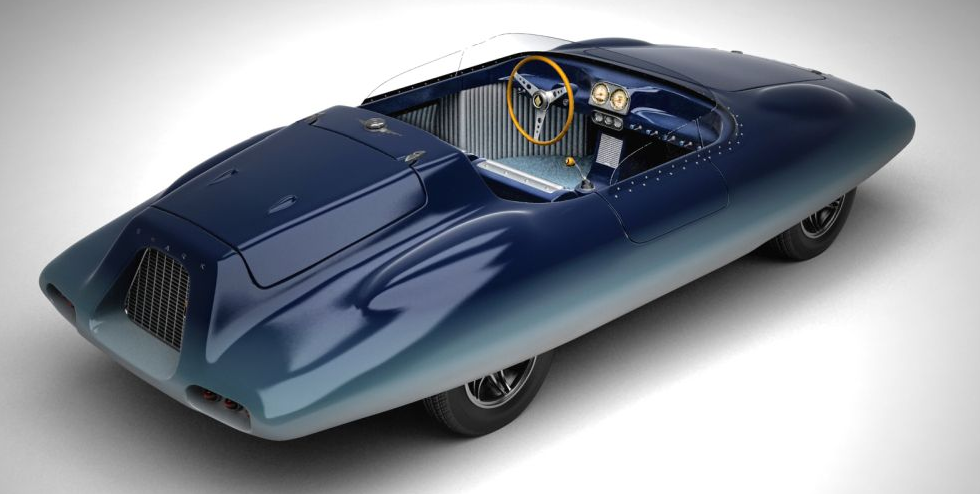
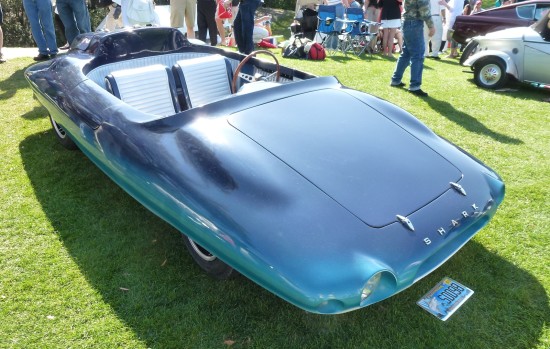
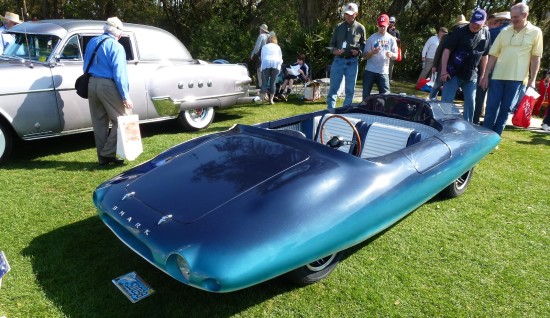
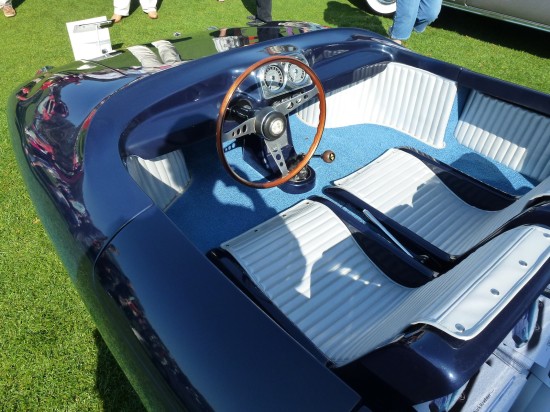

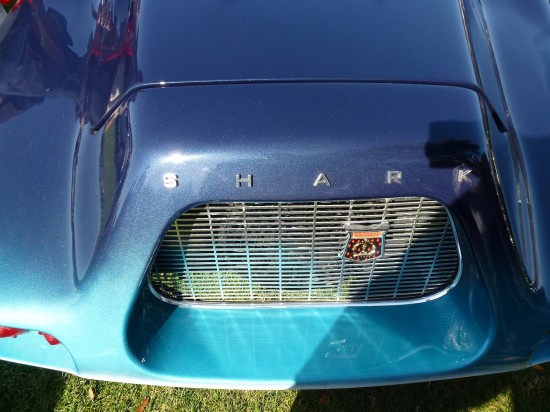
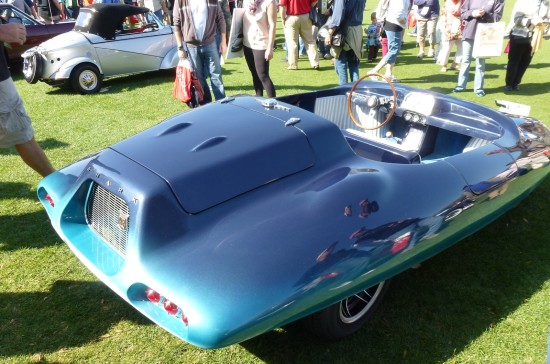
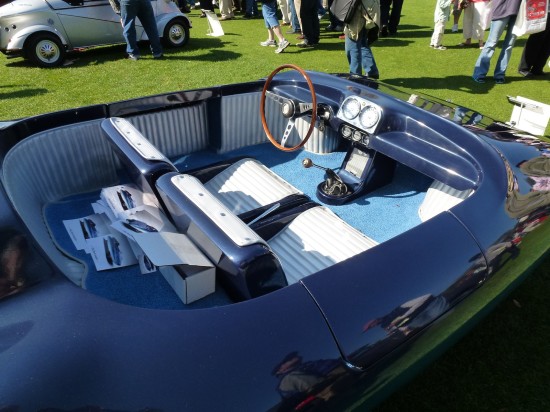
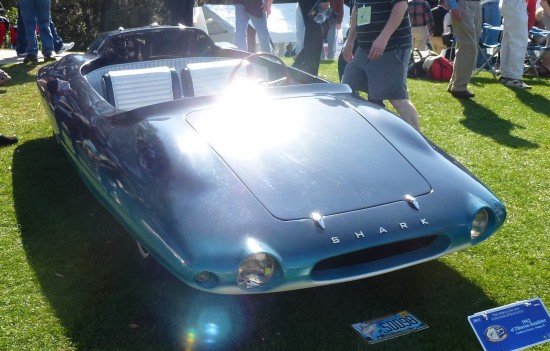
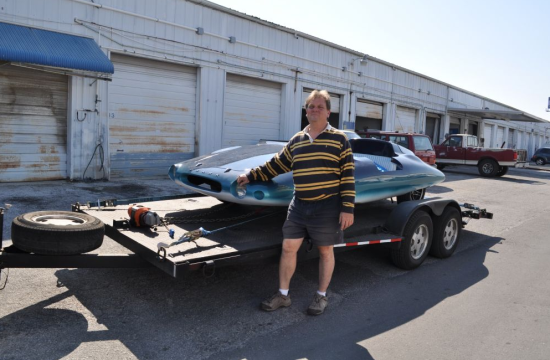
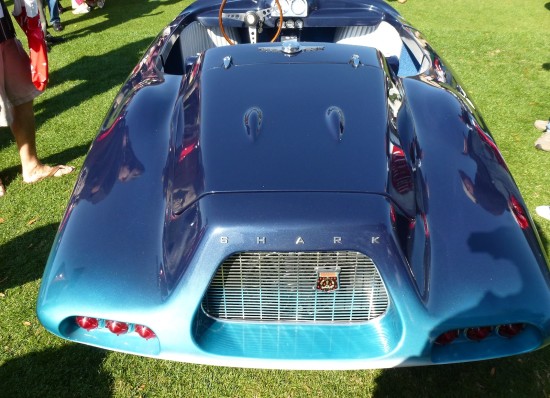
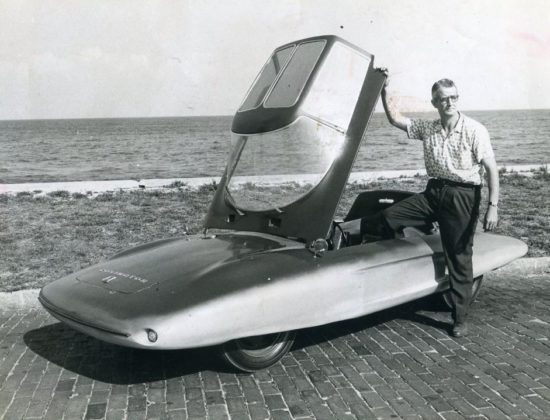



This is a cool car I never heard of before!
Me either!
The exposed hood hinges make it look like the trunk lid. I don’t know if this car is coming or going ))
It’s daddy must have been a ’50 Studie!
this thing seems doesn’t have either clutch, throttle or brake peddles? how it is driven by a driver…..
If you enlarge picture No.4 (from the top), and then zoom in a bit more, you’ll be able to see the pedals 🙂
I believe I saw this car in someone’s yard on Lewis Island/Coquina Key in St. Petercburg in the early sixties. I remembered it because of the unique style and shape. I do not know if it was operational at the time.
Reminds me of the original GM C.E.R.V..s that made the show circuit around the same period or little later.
Yikes! Really? Now I know where Colin Chapman could have gotten a vision. Let’s see… fiberglass bodywork, a Renault engine in the back (and the reduced rearward vision that comes with it), exposed trunk lid hinges, impressive aerodynamic numbers… Lotus Europa fans, help me!
First of all, there is no way to help ya, sorry.
There is one thing about this car though, and that is that a person can get in and out of it.
Hi Gang and thanks to Michael for such a nice story on my Shark. I’ve owned the Shark for 38 years and recently added another Shark to our collection. I remember driving it to college – I was way braver then. Keep the stories coming Michael and thanks for your interest. Geoff Hacker
Hi, thanks for sharing the Shark history. Certainly, the fiberglass body is light enough to be able to reach a decent speed with a 747cc Renault engine from a Renault 4 cv. It would be interesting to see a photo of the engine compartment. The rear grill is there just for decoration because the radiator, if I am not mistaken, must be located directly behind the cockpit. I love automotive history. Robert Quadrelli
OF ALL THE CHOICES, WHY A RENAULT, ANY SIZE ENGINE, MUCH LESS A 747 CC ?????
I have seen that rear end on another car in southern California in the last few years at some show. I haven’t found it in my archives yet but when I do I’ll post it. I’m sure the rest of the car didn’t look like that or I would have remembered.
i dont understand that hump at the back. why not a vw beetle 4 flat engine instead? that would make it way more streamline. that hump would disappear. or a corvair engine.
This would have made an awesome amphibious car.